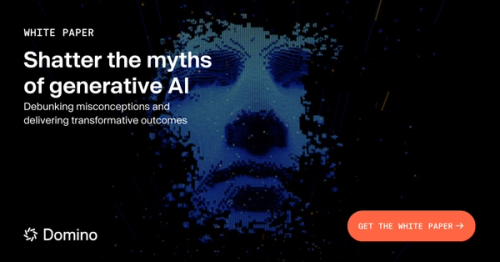How Tripadvisor uses generative AI to streamline trip planning
Yuval Zukerman2024-03-19 | 5 min read

If you travel often, you visit tripadvisor.com to make sure your hotel is not a nasty surprise. TripAdvisor is also there for you when you need to know what to see when you visit Paducah, KY, for the first time (the National Quilt Museum? I'm so there!). If you're old enough, you probably remember the good old days when a travel agent could do that for you and knew what they were talking about.
Domino's Kjell Carlsson recently interviewed TripAdvisor's Rahul Todkar, VP Head of Data and AI. They discussed how the company used Generative AI (GenAI) to offer the 'Build a Trip with AI' tool.
A survey by Oliver Wyman showed AI's powerful impact already on the travel industry:
- One-third of travelers already use AI to plan their travel.
- More than 80 percent were satisfied or very satisfied with AI's travel advice.
- Over 50 percent of travelers used AI's trip advice.
You can credit some of this success to TripAdvisor's trailblazing tool. The company is a GenAI pioneer. It used the technology to create its tool soon after ChatGPT's launch, focusing on user experience and traveler expectations. The company owns a vast data trove of over a billion reviews. The reviews span hotels, restaurants, attractions, and activities, giving TripAdvisor the fuel to power this novel experience. Such contributions and the site's traveler community improve trust in the content.
GenAI best practices
GenAI was the ideal tool for TripAdvisor's massive datasets. It helped the company create relevant summaries and recommendations. Nonetheless, the company keeps humans in the loop. They review text outputs to validate results and brand compliance. They also verify that generated plans meet travelers' needs.
Rahul shared TripAdvisor's best practices in bringing AI trip planning to production:
- Quality first-party data: More than ever, you need your data in one place, with high accuracy, taxonomy, and metadata.
- Quality control is critical: You need to review both inputs and outputs. Your prompts need to provide the LLM with the correct information. You must refine prompts to get the best results and test their accuracy.
- It's a team effort: Many people work together on GenAI. Bringing the tool the production required multiple teams to collaborate. That meant the product, engineering, cloud, and marketing had to work together. You must also include people with strong data familiarity. Finally, you need a person to define measurement goals.
During the project, TripAdvisor learned the value of a flexible data architecture. Models can consume a lot of data. Your architecture should be able to feed LLMs structured data, text, images, and documents. The company tested the data using GenAI techniques like prompt engineering and RAG to see what data worked best.
Thinking ahead
GenAI cost is an important factor for many companies, and TripAdvisor is no different. Rahul's team defined design requirements that balanced cost, accuracy, and latency. Finding the right solution took testing many LLM options, including open-source and proprietary models. Some companies worry about spiraling costs when customer adoption takes off. Rahul felt that given TripAdvisor’s optimizations, it was a good problem to have.
What's next for TripAdvisor and GenAI?
The company is looking at new use cases based on these three pillars:
- Service consumers: Who uses the service and how do they engage it? Text chat, audio, or something else? How does that impact user search and recommendations?
- Productivity: How are the LLMs helping the user? Engineers already benefit from coding assistance. Can GenAI help sales and marketing, finance, or analytics?
- Insights: How can TripAdvisor expose the learnings gathered and make them useful beyond the company's walls?
In closing, Rahul compared his CDAO experience working for a digital company like TripAdvisor to prior roles in finance. He feels the role is a combination of technical and business. A CDAO needs to identify revenue and cost savings driven by data. The CDAO must also use data to drive transformation and catalyze innovation. Finally, the CDAO is the point person for data regulation, risk, and ethics. CDAOs must mitigate and address risk - just as banks do in their regulatory compliance functions.
If you want to hear the full interview or learn from other data science leaders, please tune in to the Data Science Leaders podcast (Apple Podcasts, Spotify). To learn more about how Domino Data Lab can help you scale your AI needs responsibly, on time, and on budget, read more here.
As Domino's content lead, Yuval makes AI technology concepts more human-friendly. Throughout his career, Yuval worked with companies of all sizes and across industries. His unique perspective comes from holding roles ranging from software engineer and project manager to technology consultant, sales leader, and partner manager.



